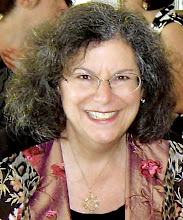

The topic of teens “sexting” was one of the issues discussed by New York Times best-selling author Rosalind Wiseman at an April 14 presentation in Elkins Park sponsored by the Auerbach Central Agency for Jewish Education. The parent motivator, best known for Queen Bees and Wannabes, basis for the movie Mean Girls, captivated an audience of over 350 educators, counselors and parents from across the region.
Wiseman’s talk was titled “Connected 24/7: Safe and Ethical Social Networking in the Digital Age.” She said her goal was to help teach kids “social competence,” ethical behavior and dignity in an age when kids seem to know more about technology than most of their parents and educators.
The speaker cited the magnitude of adolescent connection with and through social network gadgetry, using data from the Pew Internet & American Life Project (www.pewinternet.org). Readers can find that report online and discover some interesting trends.
Pew researchers found that 73 percent of 13-year-olds had cell phones of their own in 2009. Over one quarter of teens use such devices to go onto the Internet (bypassing, perhaps, home or school computers). In addition, the report noted that half of teens send more than 50 text messages daily, and one third send over 100 texts daily. Girls age 14-17 average over 100 text messages every day.
Wiseman gave significantly higher figures for sexting (20-30 percent) than the Pew report. Pew researchers found that among teens (age 12-17)owning cell phones, 4 percent say they have sent sexually suggestive or nude images by text messaging and 15 percent say they have received such images.
“Parents matter,” was Wiseman’s shout-out. They have a responsibility to set the rules prior to granting teens the privilege (not their “right”) to have access. And she said parents should monitor their use of this privilege in ways that support safety and the family’s values. She likened teen use of technology to the use of a car: you don’t wait until the child has had an accident DUI to discuss the rules.
The Center for Parenting Education, based in Abington, was a regional resource years before Wiseman ever came on the scene. [www.centerforparentingeducation.org] Founded in the 1990s with the support of Abington Hospital and other partners, the Center’s professional and/or certified parent educators provide programs, information and skills to help raise emotionally healthy children. According to Assistant Director Deb Cohen, these programs have served more than 18,000 enrollments since they began recording, and in 2009, the Center’s new website attracted 16,500 page requests. Participants come from Lansdale, Norristown, Lower Bucks and even New York, says Cohen.
Cohen calls the evolving technology world of teens the “wild west” and says it requires parents to be vigilant and diligent to “keep their kids safe in cyberspace.”
She acknowledges the “mixed blessing” of contemporary information and communications tools. On one hand, “Kids need these tools for homework and to collaborate on projects. For the shy teen, technology can be a social outlet.”
On the other hand, she notes the “addictive part,” when you can’t get the kids off the Internet and when kids take the phones to bed with them, but then don’t sleep. Cohen says she’s heard employers complain that younger applicants and employees lack interpersonal skills. “They don’t have eye contact, and don’t know how to address people professionally.” And an embarrassing moment becomes forever – “the humiliation factor, and the stakes, so much higher” – with today’s technology.
Cohen urges parents not to succumb to pressure to “friend” or try to be peers with their children. Pay attention and use active listening, without applying too much pressure or turning the spotlight on them. Pre-think and revisit their engagement with technology. Monitor your children’s moods – as well as their boundaries. Consequences for breaking the rules – breaking trust - need to be serious and meaningful so that the teen can learn from the mistake: sort it all out, talk about what went wrong and ensure how it won’t happen again in the future.
Adolescent privacy – as Wiseman says – is not an absolute.
The Center for Parenting Education incorporates advice about technology within many programs. You’ll find it woven into different workshops on bullying, on discipline, on adolescent behavior and on success in school/homework, because technology intersects all aspects of life.
If you can’t attend their programs in person, you can nevertheless find dozens of valuable workshops, presentations and articles available on their website.







